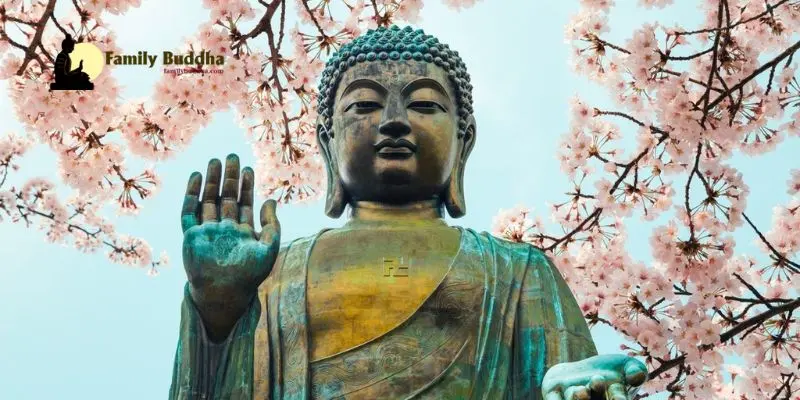“Cây đa cội khế”, whispers the grandmother, a mischievous glint in her eye. The children, huddled around her, shiver, captivated by the age-old tale of the banyan tree spirit, both benevolent and fearsome. This duality, echoing the yin and yang of the universe, lies at the heart of how Buddhism views the spirit world, including the enigmatic “Evil Tree Spirits.”
Unraveling the Roots of Belief: Tree Spirits in Vietnamese Folklore
In Vietnam, where lush rice paddies meet ancient forests, the spirit world is not a distant realm, but an intrinsic part of life. This is especially true with trees, often seen as living embodiments of strength, wisdom, and the interconnectedness of all things.
Guardians of Nature, Harbingers of Fate
 The Banyan Tree Spirit
The Banyan Tree Spirit
From the sacred banyan, revered as a meeting place for gods, to the majestic “cây đa” gracing village entrances, trees hold deep cultural and spiritual significance. Legends abound of tree spirits, both benevolent and vengeful, shaping destinies and reflecting the delicate balance between humanity and nature.
Dr. Nguyen Thi Lan, a renowned scholar of Vietnamese folklore, explains in her book “Whispers from the Banyan Tree,” that these beliefs, far from being mere superstition, offer a window into the Vietnamese psyche. “They reflect a deep respect for nature’s power and a recognition of the interconnectedness of all living things.”
The Darker Shade of Green: Origins of “Evil”
However, just as the forest holds both sunlight and shadow, so too does the realm of tree spirits. Tales of “evil” tree spirits, often residing in gnarled, ancient trees in secluded parts of the forest, are rife with cautionary wisdom. These spirits are often seen as manifestations of:
- Unresolved Grievances: The spirits of those who died unjustly near the tree, their anger and sorrow seeping into its very core.
- Ecological Imbalance: A reflection of nature’s fury when disrespected or exploited, the tree spirit becomes a vengeful protector.
- Tests of Character: Much like trials faced on the Buddhist path, encounters with these spirits could represent challenges meant to strengthen one’s resolve and compassion.
A Buddhist Perspective: Beyond Good and Evil
Buddhism, with its emphasis on compassion and understanding, offers a nuanced perspective on these “evil” spirits.
The Illusion of Duality
 Meditation Under the Bodhi Tree
Meditation Under the Bodhi Tree
Central to Buddhist teachings is the concept of non-duality – the understanding that concepts like “good” and “evil” are ultimately constructs of the human mind.
“Just as the lotus flower blooms in muddy water,” teaches Venerable Thích Nhất Hạnh, “so too can enlightenment arise from even the most challenging of circumstances.”
Instead of labeling tree spirits as inherently good or evil, Buddhism encourages understanding their actions as arising from causes and conditions. Their anger, while seemingly negative, could stem from suffering and attachment – emotions that all beings experience.
Compassion as the Guiding Light
The Buddhist response to fear, even fear of the supernatural, is not to lash out or succumb, but to cultivate compassion. This involves:
- Understanding: Seeking to understand the suffering that may fuel the spirit’s actions.
- Forgiveness: Letting go of anger and resentment, towards both the spirit and oneself.
- Offering Loving-Kindness (Metta): Sending thoughts of peace, love, and well-being to the spirit, just as one would to any being.
Living in Harmony: Practical Applications
This compassionate approach doesn’t negate the need for caution and respect when interacting with the natural world.
Mindful Interactions
- Respectful Communication: Acknowledge the spirit’s presence, speak with respect, and seek permission before entering sacred groves.
- Offerings of Gratitude: Small offerings of incense, flowers, or food can symbolize respect and appreciation for the spirit’s role as guardian.
- Environmental Mindfulness: Engage in practices that promote ecological balance, recognizing that harming nature can also harm the spirits residing within it.
Transforming Fear into Wisdom
 Tranquil Forest Temple
Tranquil Forest Temple
Ultimately, Buddhism encourages us to view encounters with “evil” tree spirits not as something to fear, but as opportunities for growth:
- Mirrors of Self: Their actions can reflect our own internal struggles with anger, attachment, and fear.
- Catalysts for Compassion: They provide opportunities to practice compassion, even towards beings perceived as threatening.
- Reminders of Interconnectedness: Their presence underscores the interconnectedness of all beings and the importance of living in harmony with the natural world.
By approaching these encounters with mindfulness and compassion, we can transform fear into wisdom and contribute to a more harmonious existence for both ourselves and the unseen world around us.









